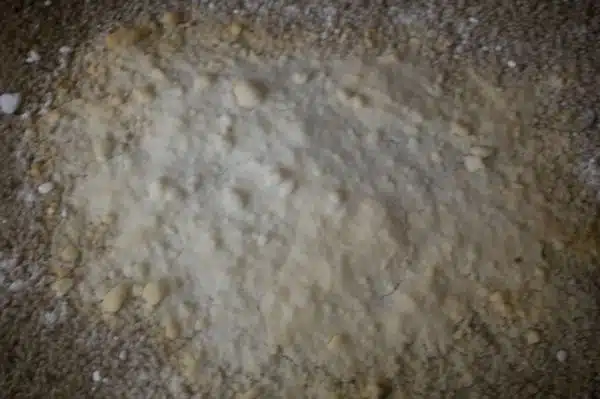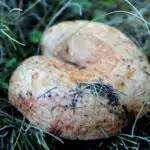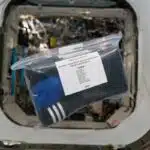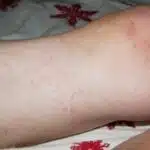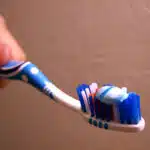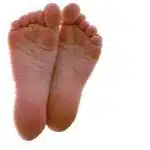Urine stains can be one of the most unpleasant and difficult stains to remove from clothes and carpet. Whether it is caused by a pet, child or even an adult, urine stains can leave an unpleasant odor and discoloration if not treated properly. As a cleaning expert with years of experience in stain removal, I have come across various methods that work effectively in tackling this problem.
Removing urine stains requires patience and the right tools. It is important to act quickly as soon as you notice the stain to prevent it from setting in permanently. In this article, we will explore some effective methods that you can use to remove urine stains from clothes and carpet. These methods are easy to follow and make use of common household items such as vinegar, baking soda, hydrogen peroxide among others. With these tips, you can restore your clothes and carpet back to their original state without damaging them further.
Understanding The Nature Of Urine Stains
Urine stains are common occurrences, especially in households with pets or children. Understanding the chemical reactions involved in urine stains is crucial for effective removal. Urine contains a complex mixture of chemicals, including urea, creatinine, urochrome, and other waste products that can vary depending on an individual’s health status and diet. When urine comes into contact with fabric or carpet fibers, it can quickly seep into the material and cause discoloration.
Different types of urine stains can also affect the removal process. Fresh urine stains are typically easier to remove than older ones because they have not had time to set into the material. Additionally, cat urine contains high levels of protein which makes it more difficult to remove than dog urine or human urine. Male cat urine is even more challenging to remove due to its high concentration of hormones.
Understanding these differences is essential for successful stain removal. It’s important to note that using the wrong cleaning solution or technique can actually worsen the stain or damage the fabric. Therefore, proper preparation is necessary before attempting any type of stain removal process.
Preparing For Stain Removal
As the saying goes, prevention is better than cure. This holds true for urine stains as well. Pre-stain treatment can go a long way in saving your clothes and carpets from permanent damage. The first step towards pre-stain treatment involves blotting up as much urine as possible with an absorbent cloth or paper towel. It is advisable to use white cloths to avoid any color transfer onto the fabric.
Once you have blotted up most of the urine, it’s time to move on to stain removal techniques. There are various methods to remove urine stains depending on the type of fabric and severity of the stain. For example, enzymatic cleaners work best on organic fabrics such as cotton and linen, whereas hydrogen peroxide solution is ideal for synthetic fibers like polyester and nylon.
It is important to remember that different fabrics may require different treatments, so always read the care label instructions before attempting any cleaning methods. Additionally, never rub the stain vigorously, as this can cause further damage by spreading the stain deeper into the fabric. In our next section, we will explore how blotting the stain can be an effective technique in removing urine stains from clothes and carpets.
Blotting The Stain
Blotting the Stain Blotting is an essential technique in removing urine stains from clothes and carpets. This process involves using an absorbent material to soak up as much of the urine as possible. Blotting can be done using a variety of materials such as paper towels, white cloths, or even a clean sponge.
When blotting a urine stain, it’s important not to rub the area vigorously as this could spread the stain further. Instead, gently dab the area with an absorbent material until all excess moisture has been absorbed. Repeat this process until the area is no longer wet to touch.
To ensure maximum effectiveness when blotting a urine stain, use effective absorbent materials such as microfiber cloths or thick paper towels. These materials have better absorption capabilities than regular cloth or tissue paper and can help remove more of the urine from your clothes or carpet.
- When blotting a urine stain, start from the outer edges of the stain and work your way inward.
- Use a fresh piece of absorbent material every time you blot to prevent spreading any residual urine.
- For larger stains on carpets, consider using a wet/dry vacuum cleaner to suction out excess liquid before blotting.
- Avoid using colored cloths or towels when blotting as these can transfer color onto your clothes or carpet fibers.
Now that you have effectively blotted away excess moisture from the urine stain, it’s time to move on to applying a cleaning solution for complete removal of any remaining residue.
Applying A Cleaning Solution
As a stain removal specialist, choosing the right cleaning solution is the first step in eliminating urine stains from clothes and carpets. There are various types of cleaning solutions available on the market, so it’s essential to pick one that suits your fabric or carpet material. It’s crucial to read the label of the cleaning product carefully before applying it to avoid any damage or discoloration.
Once you have identified the appropriate cleaning solution, proper application techniques are necessary for successful stain removal. Firstly, test a small area of your material with the cleaning solution before applying it to the entire stained area. This step is vital as it will determine if there will be any negative effects on your fabric or carpet. Secondly, apply the cleaning solution directly onto the stained spot and let it sit for a few minutes. Lastly, use a clean cloth or sponge to blot and rub gently until all traces of urine stains have been removed.
When using vinegar as a stain remover for urine stains on clothes or carpets, there are specific steps you need to follow for effective results. Vinegar is an excellent natural cleaner that can neutralize odor and eliminate bacteria from urine stains effectively. To begin with, mix equal parts of white vinegar and water in a spray bottle. Spray generously onto the affected area and let it sit for 10-15 minutes before blotting with a clean cloth or sponge until the stain disappears completely. Vinegar is an affordable alternative that not only removes urine stains but also sanitizes your fabrics and carpets without leaving any harmful residue behind.
Using Vinegar As A Stain Remover
After applying a cleaning solution to a urine stain, it is important to follow up with a vinegar treatment. Vinegar is an excellent natural stain remover that can effectively eliminate any remaining urine traces on clothes or carpets. The acidity of vinegar breaks down the uric acid in urine and neutralizes the odor.
To use vinegar as a stain remover, mix equal parts water and white vinegar in a spray bottle. Spray the solution onto the stained area and let it sit for 10-15 minutes. Then, blot the area with a clean cloth until all excess moisture is removed. Repeat this process until the stain is completely gone.
For tougher stains or odors, combine vinegar with hydrogen peroxide. This mixture can help break down any residual bacteria and effectively remove any lingering odor. Mix equal parts water, white vinegar, and hydrogen peroxide in a spray bottle and spray it onto the affected area. Let it sit for 15-20 minutes before blotting away any excess moisture with a clean cloth.
Baking soda to the rescue! If you are still struggling with stubborn urine stains or odors after using vinegar treatments, baking soda may be your next solution. In the next section, we will explore how this common household ingredient can be used to tackle even the toughest of urine stains on clothes and carpets.
Baking Soda To The Rescue
If you’re looking for a natural solution to remove urine stains from clothes and carpets, baking soda is an excellent option. Baking soda is a versatile household product that can be used in many different ways. It has powerful cleaning properties due to its ability to break down stains and odors.
When using baking soda as a stain remover, start by blotting up as much of the urine as possible with a clean cloth or paper towel. Then, sprinkle baking soda generously over the affected area and let it sit for at least 30 minutes. Afterward, vacuum up the baking soda with a clean brush attachment or sweep it away with a broom and dustpan. This will lift away any remaining urine residue and leave your clothes or carpets fresh and clean.
The benefits of natural stain removers like baking soda are numerous. They are safe for use around children and pets, they are environmentally friendly, and they are often more affordable than commercial stain removers. Additionally, natural remedies like baking soda usually have multiple uses beyond just removing stains. For instance, you can use baking soda to freshen up your fridge or eliminate odors from your shoes. In short, using baking soda is an effective way to tackle tough stains while also reaping the benefits of natural cleaning solutions.
Transition: While baking soda is great for everyday urine stains, sometimes you need something stronger for tough set-in stains. That’s where hydrogen peroxide comes in handy!
Hydrogen Peroxide For Tough Stains
Hydrogen Peroxide is an effective cleaning agent due to its oxidizing properties which work to break down tough stains. Its bleaching properties are also beneficial in removing discoloration caused by urine stains. It is important to take precaution when using hydrogen peroxide as it is a strong chemical and may damage fabrics and carpets if it is not used correctly. For removing urine stains from clothes and carpets, the recommended process is to pretreat the stain with a detergent and warm water before applying the hydrogen peroxide solution.
Hydrogen Peroxide Benefits
When it comes to tough stains like urine on clothes and carpets, hydrogen peroxide is a powerful solution to consider. As a cleaning expert, I have seen the benefits of using hydrogen peroxide in various cleaning applications, including oral hygiene and skin care. Hydrogen peroxide is a versatile product that can help you tackle many household tasks without harsh chemicals.
One of the benefits of hydrogen peroxide is its effectiveness for oral hygiene. Many people use it as a mouthwash or toothpaste ingredient because it helps kill bacteria and freshen breath. However, it’s important to remember that hydrogen peroxide should always be diluted before using it for oral care. A 1% solution is safe for most people, but higher concentrations can cause irritation or damage to your teeth and gums.
Another benefit of hydrogen peroxide is its potential for skin care. When used properly, hydrogen peroxide can help treat minor cuts and scrapes by killing bacteria on the skin’s surface. It may also help reduce acne breakouts by unclogging pores and reducing inflammation. However, like with any new skincare product, it’s essential to do a patch test first to ensure you don’t have an adverse reaction.
In conclusion, hydrogen peroxide has numerous benefits beyond just removing tough stains from clothes and carpets. As a cleaning expert, I highly recommend adding this versatile product to your home cleaning kit for other purposes like oral hygiene and skin care. Just remember always to dilute before use and do a patch test when trying out new applications on your body.
Hydrogen Peroxide Usage
Hydrogen peroxide is a powerful solution when it comes to tough stain removal, but it’s crucial to use it safely on different fabrics. As a cleaning expert, I have seen the effectiveness of hydrogen peroxide in removing stains from clothing and carpets. However, it’s essential to understand the fabric type before using hydrogen peroxide because certain fabrics may be more vulnerable to damage than others.
When using hydrogen peroxide for stain removal on clothes, it’s important always to do a spot test first. Some fabrics are more delicate than others and can easily get damaged by the strong oxidizing properties of hydrogen peroxide. Additionally, it’s crucial never to mix hydrogen peroxide with bleach as this can create toxic fumes that can cause severe health problems.
Another point to keep in mind is that hydrogen peroxide should be diluted before using it on fabrics. A 3% solution is suitable for most applications, but higher concentrations may lead to discoloration or weakening of the fabric fibers. Therefore, one should use caution when applying undiluted hydrogen peroxide directly onto clothing or carpets.
In conclusion, using hydrogen peroxide effectively and safely requires an understanding of how different fabrics react to its oxidizing properties. Always perform a spot test before using it and dilute it appropriately for the specific application at hand. By following these guidelines, you can successfully remove stubborn stains without damaging your clothing or carpets in the process.
Enzymatic Cleaners For Pet Stains
As a stain removal specialist, I highly recommend using enzymatic cleaners for pet urine stains. These cleaners contain enzymes that break down the proteins in urine and eliminate the odor. They are effective on both clothes and carpets, leaving them looking and smelling fresh.
The benefits of enzymatic cleaners go beyond just removing stains and odors. They are also environmentally friendly and safe to use around pets and children. Additionally, they are versatile and can be used on a variety of surfaces such as upholstery, bedding, and even car interiors.
When choosing the best enzymatic cleaner for your needs, consider factors such as the type of surface you will be cleaning, the severity of the stain, and any specific concerns such as allergies or sensitivities to certain chemicals. Look for products with high enzyme concentrations for maximum effectiveness.
By using enzymatic cleaners for pet stains, you can ensure that your home remains clean and odor-free without exposing yourself or your loved ones to harsh chemicals. In the next section, we will discuss how to avoid these harmful substances while still achieving optimal cleaning results.
Avoiding Harsh Chemicals
When it comes to removing urine stains, using harsh chemicals may not always be the best solution. Luckily, there are eco-friendly alternatives and natural cleaning options available that can effectively remove these stains without causing harm to your clothes or carpet. These alternatives are safe for both the environment and your health.
One great alternative to harsh chemicals is vinegar. Vinegar has acidic properties that can break down the proteins in urine, making it easier to remove the stain. Simply mix equal parts water and vinegar together and apply it directly onto the stain. Let it sit for a few minutes before blotting with a clean cloth.
Another natural cleaning option is baking soda. Baking soda is known for its ability to absorb odors, but it can also be used to remove urine stains from clothes and carpet. Mix baking soda with water until it forms a paste-like consistency, then apply it onto the stain. Let it sit for a few hours before vacuuming or washing away.
| Eco-Friendly Alternatives | Natural Cleaning Options |
|---|---|
| Vinegar | Baking Soda |
| Hydrogen Peroxide | Lemon Juice |
| Borax | Salt |
Using eco-friendly alternatives and natural cleaning options not only helps protect our environment, but they also provide a safer solution for you and your family’s health. In addition to removing urine stains, these options can also help eliminate any odors left behind by the stain. Speaking of odors, let’s move on to deodorizing the area where the stain was removed.
Deodorizing The Area
Like a skilled artisan, the art of removing urine stains from clothing and carpet requires patience and precision. Avoiding harsh chemicals is crucial to preserve the texture and color of your fabric or carpet. However, neutralizing odor is also vital in the process. Urine stains have a pungent smell that lingers, so it’s essential to choose the right deodorizer for your needs.
When choosing a deodorizer, it’s important to consider the type of fabric or carpet you’re treating. Some materials are sensitive to strong scents and may require a mild solution like vinegar or baking soda mixed with water. For tougher stains, enzyme-based cleaners work best as they break down organic matter like urine and leave no trace behind. It’s also recommended to look for products with natural ingredients that are safe for pets and children.
Neutralizing odor is only half the battle; now it’s time to deodorize the area. A natural way to do this is by placing bowls of white vinegar around the room as it absorbs unpleasant smells. Activated charcoal is also an excellent alternative as it absorbs moisture and purifies the air. For stubborn odor, spraying a mixture of essential oils such as lavender or peppermint diluted with water can help freshen up space.
After neutralizing odor and deodorizing the area, drying the stained area should be done correctly.
Drying The Stained Area
After removing as much of the urine stain as possible, the next step is to dry the affected area. Air drying is a great option, as it allows for natural evaporation without damaging the fabric or carpet fibers. Simply hang up the clothing item or leave the carpet exposed to air until it dries completely. This can take anywhere from a few hours to a full day depending on the size of the stain and how much moisture was absorbed.
For those who need a faster solution, using a hair dryer on a low heat setting can speed up the drying process. Hold the dryer around 6 inches away from the stained area and move it back and forth until it is dry. Be careful not to overheat delicate fabrics or singe carpet fibers by holding the dryer too close or leaving it in one spot for too long.
Once you have finished drying, check for any residual stains that may have been left behind. Even if you cannot see any remaining discoloration, there may still be odor causing bacteria present. In our next section, we will discuss ways to check for these issues and ensure that your clothes or carpets are fully restored to their original state.
Checking For Residual Stains
1.When checking for residual stains, it is important to look for both color and odor. 2.Color is a good indicator of how much of the stain is left on the fabric or carpet. 3.Odor is also an important factor when assessing the presence of residual stains, especially with urine stains. 4.By using a combination of visual inspection and smell, one can effectively determine if the stain has been completely removed.
Checking For Color
Understanding color variations is an essential aspect of checking for residual stains. Different materials react differently to various cleaning agents and techniques, making it crucial to identify the type of stain before proceeding with any cleaning process. When dealing with urine stains, it is essential to note that the color of the fabric or carpet can also affect how visible the stain appears. For instance, removing a urine stain from a white shirt is relatively easier than getting rid of a similar spot on a colored shirt.
Identifying different types of stains is also vital when checking for residual stains after treating urine spots. Urine contains chemicals that interact with different fabrics in various ways. For example, some fabrics may discolor or bleach when exposed to urine, while others may become stiff or lose their luster. Identifying these changes helps determine the best course of action when removing residual stains and preserving the quality and appearance of the material.
In conclusion, understanding color variations and identifying different types of urine stains are critical steps in checking for residual stains after cleaning clothes and carpets. By doing so, one can ensure that no traces of urine remain on the material while preserving its original quality and appearance.
Checking For Odor
After checking for residual stains, it is equally important to check for any residual odor left behind by the urine. Detecting odor is crucial since it can lead to the attraction of pests such as rodents and insects, making the area unhygienic and unsafe. Additionally, if the smell persists, it can cause discomfort or embarrassment to anyone who comes into contact with the affected material.
To eliminate odor effectively, it is essential to identify the source of the smell first. In some cases, urine may have penetrated deep into the fabric or carpet fibers, making it challenging to remove completely. In such instances, using an enzymatic cleaner that breaks down urea crystals and other urine components may be necessary. However, if the smell persists even after cleaning, airing out the material in direct sunlight may help neutralize any remaining odors.
In conclusion, checking for residual odor is just as important as checking for residual stains when treating urine spots on clothes and carpets. By detecting and eliminating odors effectively, one can prevent potential health hazards and ensure that the affected materials are safe and hygienic for use again.
Tips For Preventing Future Stains
Preventive measures are key to avoiding future urine stains on your clothes and carpet. One of the best ways to do this is by training your pets or children to use the bathroom properly. This can be done using positive reinforcement techniques such as providing treats or praise for good behavior. Additionally, frequent bathroom breaks can help reduce accidents and prevent stains from occurring.
Another long-term solution to preventing urine stains is investing in quality protective covers for your furniture and carpets. These covers are designed to be waterproof and can protect against urine stains, spills, and other accidents. They are available in a variety of materials and styles, making it easy to find one that fits your needs and preferences.
Finally, proper cleaning techniques can also help prevent future urine stains. Be sure to thoroughly clean any areas where accidents have occurred with an enzymatic cleaner designed specifically for pet or human urine. This will break down the proteins that cause odors and stains, making it less likely for pets or children to mark the same spot again.
Looking for long-term solutions is key when it comes to preventing future urine stains on your clothing and carpets. By taking preventive measures such as training pets or children, investing in protective covers, and using proper cleaning techniques, you can minimize the chances of accidents happening in the first place. In the next section, we’ll discuss what not to do when removing urine stains from fabrics and carpets.
What Not To Do When Removing Urine Stains
Rubbing a urine stain can cause it to set into the fabric or carpet, making it much more difficult to remove. Bleach is not recommended for use on urine stains as it can damage the fabric or carpet and also cause discoloration. Using hot water can also cause the stain to set and become more difficult to remove. Cold water is the best temperature to use when attempting to remove a urine stain. Additionally, allowing the spot to dry completely before attempting to remove the stain can help to ensure that the stain does not set. Finally, it is important to avoid using any cleaning products that are not specifically designed for removing urine stains to avoid any potential damage to the fabric or carpet.
Do Not Rub
When it comes to removing urine stains from clothes and carpets, it is crucial to avoid rubbing the affected area. Rubbing may spread the stain, making it harder to remove. Instead, use a gentle cleaning approach that involves blotting the stain with a clean cloth or paper towel. Blotting helps absorb the urine without pushing it deeper into the fabric or carpet fibers.
As a cleaning expert or stain removal specialist, I recommend using alternative solutions when dealing with urine stains. For instance, you can mix equal parts of vinegar and water and use the solution to blot the affected area gently. Vinegar has acidic properties that neutralize the ammonia in urine and eliminate any odor. Alternatively, you can sprinkle baking soda on the stained area, let it sit for a few minutes, then vacuum it off. Baking soda helps absorb moisture and eliminate odors.
To prevent further damage to your clothes or carpets, avoid rubbing when trying to remove urine stains. Instead, opt for gentle cleaning methods such as blotting with a clean cloth or using alternative solutions like vinegar or baking soda. Doing so will not only help get rid of the stains but also save you time and money in replacing damaged items. Remember that prevention is always better than cure when dealing with stubborn stains like urine.
Do Not Use Bleach
When removing urine stains from clothes or carpets, it is important to avoid using bleach. While bleach may seem like a powerful solution for tough stains, it can actually make the problem worse. Bleach can react with the proteins in urine and create a permanent yellow stain. Additionally, bleach can damage fabrics and carpet fibers, weakening their structure and causing them to deteriorate faster.
Instead of resorting to bleach, consider using natural alternatives that are gentler on your clothes and carpets. There are many effective natural stain removers that you can try, such as hydrogen peroxide or lemon juice. Hydrogen peroxide has bleaching properties without the harmful effects of chlorine bleach. On the other hand, lemon juice has acidic properties that can break down urine stains and eliminate odors.
When dealing with urine stains on clothes or carpets, always choose natural stain removers over harsh chemicals like bleach. Not only will this approach be safer for your items, but it will also protect your health and the environment from harmful toxins. So next time you encounter a stubborn urine stain, remember that there are plenty of alternatives to bleach that are just as effective at removing stains and odors.
Do Not Use Hot Water
When it comes to removing urine stains, there are certain mistakes that should be avoided to achieve the best results. One of these common mistakes is using hot water. While hot water may seem like a logical solution for tough stains, it can actually make matters worse by setting the stain into the fabric or carpet fibers.
Hot water can cause protein-based stains, such as urine, to coagulate and become more stubborn. This means that the stain will be harder to remove and may even become permanent. Additionally, hot water can cause the fibers in fabrics and carpets to shrink or warp, leading to damage that cannot be reversed.
Instead of using hot water, opt for alternative stain removal methods that are gentler on your items. For example, you could use cold water or a mixture of vinegar and baking soda to remove urine stains from clothes or carpets. These natural remedies are effective at breaking down proteins in urine without causing damage to your items.
By avoiding common mistakes like using hot water and choosing alternative stain removal methods, you can effectively remove urine stains from your clothes and carpets without causing further damage. So next time you encounter a pesky urine stain, remember to take a gentle approach for the best results.
Conclusion: Achieving A Fresh And Clean Home
Now that you know what not to do when removing urine stains, it’s time to focus on the steps you should take to effectively and safely eliminate these unsightly marks from your clothes and carpets. One of the best ways to achieve a fresh and clean home is by using eco-friendly cleaning methods that are both safe for the environment and effective in removing stains. DIY stain removal methods can be just as effective as store-bought solutions, without the added cost or potential harm caused by harsh chemicals.
Here are some tips for removing urine stains from clothes and carpets:
- Blot up any excess urine with a clean cloth or paper towel.
- Mix a solution of equal parts water and white vinegar, then apply it directly to the stain.
- Use a clean cloth or sponge to blot the area until the stain is lifted.
Using eco-friendly cleaning methods not only helps protect the environment but also promotes healthier living conditions for you and your family. By using natural ingredients like vinegar, baking soda, and lemon juice, you can create powerful cleaning solutions that won’t harm your health or damage your belongings. Whether you’re dealing with urine stains on clothes or carpets, following these simple steps can help you achieve a fresh and clean home without resorting to harsh chemicals.
Remember, prevention is always better than cure when it comes to stains. If possible, try to catch any accidents early before they have a chance to set in. With patience and persistence, even stubborn urine stains can be removed using natural DIY methods that are gentle on both your clothes and the environment.
Conclusion
Urine stains on clothes and carpets can be a nightmare to deal with. However, understanding the nature of urine stains is crucial when attempting to remove them. Preparing for stain removal involves gathering the necessary cleaning supplies and equipment. Blotting the stain with a clean cloth or paper towel helps to absorb any excess urine before applying a cleaning solution.
Applying a cleaning solution to the affected area is essential in removing urine stains from clothes and carpets. Vinegar is an effective natural cleaner that can be used as an alternative stain remover. Checking for residual stains after the cleaning process is essential in ensuring that the affected area is entirely free of any urine stain.
Preventing future urine stains requires taking proactive measures such as using training pads for pets or being vigilant when dealing with young children or elderly people. Avoid using harsh chemicals or materials that may damage fabrics or carpets when attempting to remove urine stains.
In conclusion, achieving a fresh and clean home requires proper techniques for removing urine stains from clothes and carpets. With the right supplies, equipment, and knowledge, anyone can become adept at removing these stubborn stains effectively. As cleaning experts and stain removal specialists, we understand how frustrating it can be to deal with urine stains, but with our tips and tricks, you too can achieve a spotless home free of any unsightly marks caused by urine stains.
Image Credits
- “Watching the Progress of Baking Soda removing Urine Stains” by Teresa Trimm (featured)

